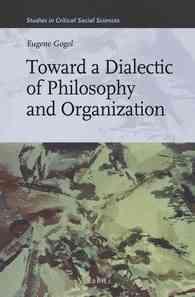Full Description
Completely updated to reflect advances in the literature on research, learning, and assessment, the book describes the role of both disciplines and interdisciplinarity within the academy, and how these have evolved. Authors Allen F. Repko, Rick Szostak, and Michelle Phillips Buchberger effectively show students how to think like interdisciplinarians in order to facilitate their working with topics, complex problems, or themes that span multiple disciplines.
Contents
PrefaceAcknowledgmentsAbout the AuthorsPART I: UNDERSTANDING INTERDISCIPLINARY STUDIES1. Interdisciplinary Studies in the Real WorldWhy Interdisciplinary Studies MattersWhat Is Driving Interdisciplinary Studies TodayThe Academic Benefits of Pursuing an Interdisciplinary Studies DegreeInterdisciplinary Studies and Your Career DevelopmentCritical Thinking QuestionsApplications and Exercises2. The Rise of the Modern Disciplines and InterdisciplinarityWhy the Past MattersThe Rise of the Modern DisciplinesThe Rise of InterdisciplinarityInterdisciplinarity's Criticism of the DisciplinesCritical Thinking QuestionsApplications and Exercises3. Interdisciplinary Studies DefinedWhy Definitions MatterDefining Interdisciplinary StudiesDifferences Between Disciplinarity, Multidisciplinarity, Interdisciplinarity, and TransdisciplinarityTwo Conceptions of InterdisciplinarityUseful Metaphors of Interdisciplinary StudiesCritical Thinking QuestionsApplications and Exercises4. The Interdisciplinary Studies "Cognitive Toolkit"How She Did ItIntellectual CapacitiesValuesTraits and SkillsWays to Apply Your Interdisciplinary "Toolkit"Critical Thinking QuestionsApplications and Exercises5. Academic DisciplinesDisciplines and Disciplinarity DefinedThe Epistemic, Social, and Organizational Dimensions of DisciplinesThe Concept of Disciplinary PerspectiveThe Defining Elements of a DisciplineCritical Thinking QuestionsApplications and Exercises6. The "DNA" of Interdisciplinary StudiesAssumptions of Interdisciplinary StudiesTheories Supportive of Interdisciplinary StudiesEpistemology of Interdisciplinary StudiesHow Interdisciplinary Studies "Sees"Critical Thinking QuestionsApplications and ExercisesPART II: THINKING CRITICALLY ABOUT INTERDISCIPLINARY STUDIES7. Thinking Critically About Disciplinary PerspectivesWhat It Means to Think Critically About Disciplinary PerspectivesDeveloping a Sophisticated Conception of KnowledgeWhy Interrogate Disciplinary Perspectives (or Practice Critical Pluralism)How Interdisciplinarians Interrogate Disciplinary PerspectivesCritical Thinking ScenarioCritical Thinking QuestionsApplications and Exercises8. Thinking Critically About Disciplinary InsightsCritical Thinking AttitudesCategories of StatementsCritically Analyzing Disciplinary InsightsMapping Interdisciplinary ConnectionsCritical Thinking QuestionsApplications and Exercises9. Thinking Critically About Integration and Its ResultsApproaches to Interdisciplinary IntegrationThe Broad Model Approach to IntegrationStrategies for IntegrationThe Result of IntegrationReflecting on What Was AchievedCritical Thinking ScenarioCritical Thinking QuestionsApplications and ExercisesPART III: INTERDISCIPLINARY RESEARCH AND WRITING10. An Interdisciplinary Research "Road Map"The Power and Usefulness of ResearchDisciplinary and Interdisciplinary Approaches to ResearchThe Broad Model of the Interdisciplinary Research ProcessSTEP 1: Define the Problem or State the Research QuestionSTEP 2: Justify Using an Interdisciplinary ApproachCritical Thinking QuestionsApplications and ExercisesPeer Evaluation Activity11. Identifying Relevant Disciplines and Gathering Information About the ProblemSTEP 3: Identify Relevant DisciplinesSTEP 4: Conduct a Literature SearchThe Broad Model Rubric Applied to STEPS 3 and 4Critical Thinking QuestionsCritical Thinking ScenarioPeer Evaluation and Edit Activity12. Analyzing Insights and Reflecting on ProcessSTEP 5: Critically Analyze the Disciplinary Insights Into the ProblemSTEP 6: Reflect on How an Interdisciplinary Approach Has Enlarged Your Understanding of the ProblemConclusionCritical Thinking QuestionsAppendixesA. Intellectual AutobiographyB. Student Portfolios and BloggingC. Service Learning, Internships, and Alternative Projects for Nontraditional StudentsD. The Broad Model Rubric: Instructor Version and Sample Student OutlineE. Answer KeyGlossary of Key TermsReferencesIndex








